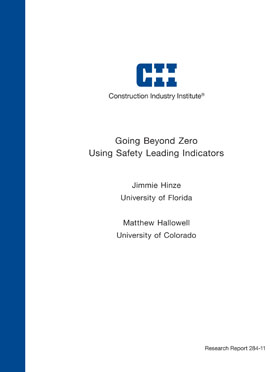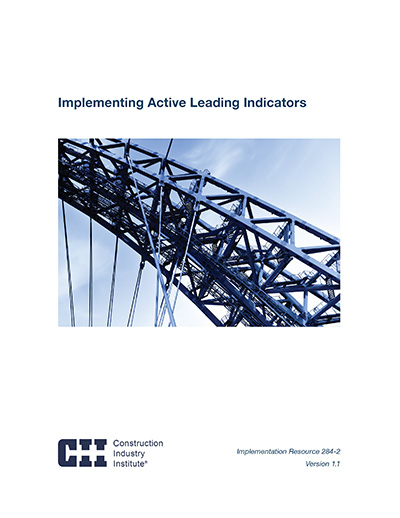
Going Beyond Zero Using Safety Leading Indicators
In the construction industry, safety performance has historically been measured with lagging indicators of safety performance, such as total recordable injury rates (TRIR); days away, restricted work, or transfer (DART) rates; and experience modification ratings (EMR). These metrics are lagging indicators because they are linked to after-the-fact assessments of safety performance. Alternatively, leading indicators are metrics that are linked to actions taken to prevent accidents which can also be used to predict future safety performance. Leading indicators are classified as passive (e.g., strategies such as policies or programs implemented to improve safety performance) and active (e.g., measures of the effectiveness of safety policies/programs). The three primary aims of this study were to (1) identify passive leading indicators that most effectively predict safety performance, (2) identify high potential active leading indicators that have proven to be successful or show high potential for success, and (3) to create resources that facilitate the effective implementation of policies/programs linked to leading indicators.
The first phase of the research involved studying passive leading indicators. Initial efforts to identify passive leading indicators were directed to the findings of past construction safety studies. Brainstorming sessions and extensive discussions were also held by the research team to identify potential passive leading indicators. The relative impacts of these metrics were quantified using statistical analyses of research data collected through interviews conducted with representatives of 57 construction projects. Statistical tests showed that 10 particular practices were associated with lower injury rates. The implementation of these strategies is inversely related to project TRIR, namely that as more strategies were implemented the injury rates were lower.
The objectives of the second phase were to (1) clearly identify and define active leading indicators that can be measured and monitored during the construction phase, (2) describe resources that were required on actual projects, (3) establish thresholds to trigger a response action, and (4) describe specific management actions required when an indicator fails to satisfy the threshold value. Active leading indicators were identified through a combination of case studies, information extrapolated from descriptions of award-winning projects, and research team brainstorming. The research approach involved a unique triangulation of empirical and opinion-based data sources that produced internally and externally valid and reliable results.
Based on Research Team member experience and as corroborated by RT-284 case study and “award winning” project description information, RT-284 documented 14 most promising and best validated active leading indicators from all of those identified. Two examples of such active leading indicators are “Owner Performs Safety Walkthroughs” and “Near Miss Reporting.” (RR284-11 Appendix C, p. 58).
Each active leading indicator presented includes the following information:
- Description of the indicator
- Measurement, method, and frequency
- Threshold value below which action or intervention is warranted
- Resources required to implement the active indicator
- Action plan to implement the indicator


